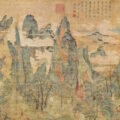On Kunwar Narain, “the Buddha of contemporary poetry”

Regardless of the genre of writing, the discourses and theories about translation hardly offer any help to the readers. The fundamental purpose of translating a work is to secure a wider readership, primarily counting on the readers who can’t read the original text. One would have to speak and write in the source language to understand all the nuances of the alphabets, words, and sentences. Reading between the lines calls for grasping the vernacular remarkably well. An effective translation eases the burden of not knowing the source language; it also can motivate one to learn the lingo.
With poetry, the process of translation faces multiple challenges. Poets camouflage facts using only a few words. They apply metaphors, imageries, similes to connect to the readers. However, all of these are language-specific and culture-specific as well. Can this be translated into another language? The target readers must find the translated piece as a finely crafted poem. Otherwise, translation appears purposeless.
I’ve noticed journals seeking translated poems along with their original version, mostly academic publications. But why does an editor want the original poem? Can they judge the aptness of translation? Is it to determine how “faithful” is the conversion from one language to another? A poem can be translated in several ways: there can be numerous versions of a given poem in the target language. An arrangement that works for me may not be equally convivial to another reader. Who will mark a particular version as the best? Readers arrive with their sensibilities, and so do the translators.
After the publication of Shernaz Wadia’s review of Bibhas Roy Chowdhury’s Poem Continuous—Reincarnated Expressions, an editor emailed me, expressing their interest to publish Roy Chowdhury’s “Lunatic.” I did not think to ask him why he wanted to publish the original Bangla poem, along with its translated version, for the Autumn 2014 edition of The Fox Chase Review. As I look back, I think I lacked confidence. I should have advised him not to use the original poem alongside its translated version. After all, the translated poem was not meant for the Bengali readers who would better enjoy the original verse without a glimpse of the translation.
I worked on my translations of Roy Chowdhury’s poetry for close to three years. Before the release of Poem Continuous, I asked him whether we should include the original poems. Roy Chowdhury said, “A poem not only belongs to the poet, it also belongs to the language!” As the Bangla proverb goes: “The beast looks delightful in the wood and babies, on mother’s lap.” Does a bilingual book, then, suffer from an identity crisis?
These were a few thoughts that crossed my mind as I read Kunwar Narain’s Witnesses of Remembrance, translated by his son, Apurva Narain (Eka, 2021). It’s a bilingual selection of poems from five books between 1979 and 2018. In his lengthy introduction to the Witnesses of Remembrance (WoR), Apurva reminds us what the Hindi scholar Pankaj Chaturvedi calls his father, “the Buddha of contemporary poetry” and writes, of the translations, that “there is not much overt linguistic legerdemain in the poems—they are profound without being smart or sensational. Like them, their translations had to whisper rather than shout out their presence.”
Apurva discusses the intricacies of his father’s work at length, “As is often said, the poet doesn’t choose her or his poems; they choose the poet. For a poet like Narain, doggedly wedded to his conscience, this is indeed true. The poems defy categorisation. Alongside a thematic and stylistic range, his verse is varyingly intellectual, interrogative, meditative, elliptical… at times even cinematic.” WoR celebrates Kunwar Narain in more than one hundred poems in this volume.
While commenting on the translator’s job, Apurva expounds, “Echoing the poet’s own mind, it meant eclecticism—taking different positions in different poems (the choice dictated by the poem itself, by its ‘semantic dominant’), which then averaged out to a sort of ‘middle path.’ Thus, faithfully mirroring a poem’s intent—a truer correspondence to its inner embrace—became more important than fidelity or freedom per se.” In a recent review published in The Hindu, Anjum Hasan finds the translation “consistently painstaking and erudite” and hopes “the special weirdness of our literary culture, in which a writer could be a proven stalwart in one language but virtually unknown in another, is redeemed…”
Was this the compelling idea that made the publisher and translator include the Hindi originals in this collection? Every time I read a poem in translation, I desired to examine the original and compare one against the other. But that practice did no justice to the English renderings. So I consciously stopped looking at the initial versions and re-read the translations. The result was striking.
In “A Shop that Sells Peace,” Apurva writes, “He knows that / the age of blusterous revolutions is over: / to feed himself now, he has to be / in the business of peace.” The poem is a stunner. In a few simple lines, Narain elucidates the prevailing socio-econo-political construct of India by portraying the neighborhood “shop of loudspeakers,” which demands a fee for not playing the amplifiers “at the crack of dawn” for two hours. Clamor tells upon us in ways more than one. Who does not like to wake up to quaint quietness? The poem stirs up a few critical questions: Why would a seller play the loudspeakers in his store at cockcrow? How can the seller even think of blowing amplifiers at the cost of creating uproar? Do we have law and order in place? However, in this 23-line poem, “He knows” appears thrice; I find it rather amateurish. For a translator of his caliber, Apurva could have used other words for “knows.” Moreover, the title reads weird; it could have been “The Peace Reseller” without impacting the crux of the original Hindi title.
Narain wrote “Puraskāra” a day before the Jnanpith prize was conferred on him. In Apruva’s translation, “The Prize” is radiant. It reads as: “exile and coronation / are daily pastimes of make-believe // donning a crown, the joy / that all see on my face / in only a child’s mask // inside me, in fact / somewhere far on the Saryu riverside / is the sadness of the sun / immersing itself in the waters.” Legend says Lord Rama ended his life by drowning himself in the river that flows across Ayodhya. Receiving accolades leads an artiste to delight. But is an award all about recognition? Is it not bidding adieu to a laureate’s most prolific phase? “The Prize” paints hesitancies in esoteric hues.
Many great verse-makers wrote about the disregard they were exposed to, coming from various corners of the society. Kunwar Narain, too, upheld his morale against existential challenges. “The Door” attests to his struggle. Apurva writes, “Touching the door, it felt / It also had a world like all / A distinct solitude, a distinct life.” And then, in the last few lines, he depicts what it takes to stand upright: “Even after being so / Heartlessly hewed and whittled down, // On its body stood beautiful / The woodgrain of its pride”.
Apurva’s translations unwaveringly mirror the original Hindi poems in the English language. It’s hard to tell, however, whether this volume of translated poems would appeal to the English-speaking audience. Nevertheless, it’s high time the publishers and translators took the call for commissioning poetry editors to cater to a niche readership.
About Kiriti Sengupta
Kiriti Sengupta has been awarded the 2018 Rabindranath Tagore Literary Prize for his contribution to literature. He has published eleven books of poetry and prose, two books of translation, and has edited seven anthologies. Sengupta is the chief editor of the Ethos Literary Journal. He lives in Delhi. More at, kiritisengupta.com.





